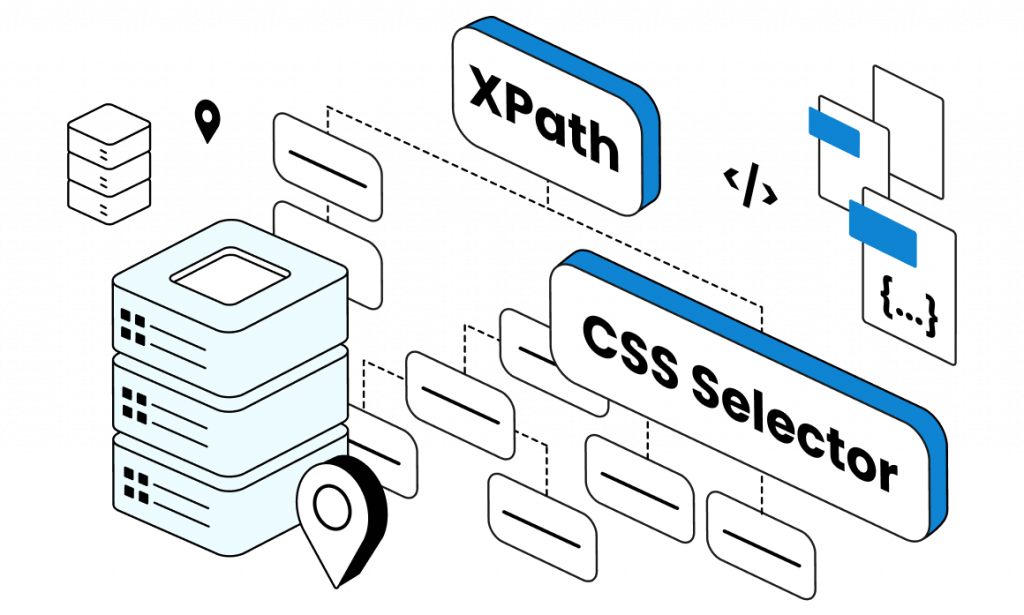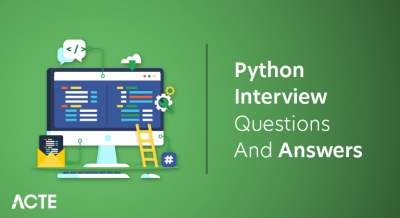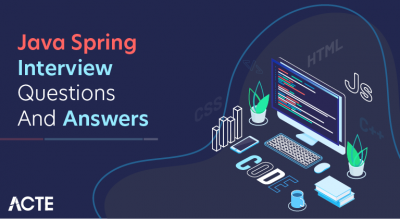
XPath (XML Path Language) is a powerful query language used to navigate and extract information from XML documents. It enables the selection of nodes, such as elements, attributes, and text, based on a variety of criteria. XPath expressions can be absolute, starting from the root node, or relative, starting from the current node context. It supports a wide range of functions and operators for complex queries, including filtering nodes with predicates, using wildcards to match multiple elements, and accessing attributes.
1. What’s XPath?
Ans:
XPath (XML Path Language) is a query language designed to select nodes from an XML document. It is widely used in various programming and markup languages to navigate through elements and attributes in XML data. XPath is also utilized to compute values from the content of an XML document, providing a way to locate specific data based on certain criteria.
2. How is XPath different from CSS pickers?
Ans:
While both XPath and CSS pickers serve analogous purposes in web scraping and testing, XPath offers further inflexibility in navigating XML and HTML documents. Compared to CSS pickers, XPath can cut overhead and down in the document tree, select rudiments grounded on various conditions, and handle namespaces more effectively. Additionally, XPath supports more complex queries, allowing for precise data extraction from intricate document structures.

3. What are the different types of XPath expressions?
Ans:
- XPath expressions come in various types, each designed to facilitate different methods of navigating and selecting nodes within an XML document.
- The primary types include absolute and relative paths. Absolute path expressions start from the root node and specify a complete path to a particular node, beginning with a forward slash (/).
- For example, /bookstore/book/title selects the <title> element of the <book> element under the <bookstore> root.
4. What is the different between absolute xpath and relative xpath?
Ans:
| Aspect | Absolute XPath | Relative XPath |
|---|---|---|
| Definition | Complete SAP software installation | Single running copy of SAP system |
| Scope | Encompasses all components for SAP apps | Represents a specific process/task |
| Components | Includes servers, databases, middleware | Specific processes on application servers |
| Components | Includes servers, databases, middleware | Specific processes on application servers |
5. What are predicates in XPath?
Ans:
Predicates in XPath are used to filter bumps grounded on specific conditions. They’re enclosed in square classes() and can contain expressions to match bumps grounded on attributes, position, or other criteria. For case,”// div(@class = ‘ illustration’)( 1)” selects the first div element with the class trait set to” illustration.” Additionally, predicates enhance query precision, allowing for targeted data retrieval in complex document structures.
6. How can XPath be used in automated testing?
Ans:
XPath is generally used in automated testing fabrics like Selenium to detect and interact with rudiments on web runners. Test scripts can use XPath expressions to identify input fields, buttons, links, or other rudiments stoutly, enabling robust and dependable test robotization across different web operations. XPath is commonly used in automated testing frameworks like Selenium to detect and interact with elements on web pages. Test scripts utilize XPath expressions to identify input fields, buttons, links, or other elements reliably, enabling robust and dependable test automation across various web applications. Moreover, XPath’s flexibility allows testers to adapt to changes in the DOM structure without needing significant script modifications.
7. What are the advantages of using XPath?
Ans:
- Essential functions and drivers for manipulating data within XML documents.
- Making it a powerful tool for tasks like web scraping.
- Data birth.
- Automated testing.
8. What methods can you use to handle dynamic elements with XPath?
Ans:
To handle dynamic elements in XPath, you can use strategies like wildcard characters, relative paths, or dynamic attributes. Wildcards (e.g., *) match any element, while relative paths from stable elements enhance flexibility. Additionally, functions like contains() and starts-with() allow for matching elements based on partial attribute values, ensuring reliable selection in automated processes.
9. What are XPath axes, and how do they work?
Ans:
- XPath axes are a set of predefined paths used to navigate the hierarchical structure of XML documents.
- They define the connections between bumps similar to a parent, child, stock, ancestor, and assignee.
- Axes enable precise navigation through the document tree, allowing users to elect bumps grounded on their position relative to other bumps.
10. How does XPath support the use of namespaces?
Ans:
Yes, XPath can be used with namespaces by prefixing elements and trait names with their namespace prefix. This allows XPath expressions to directly identify rudiments and attributes within namespaces, ensuring correct selection and traversal of XML documents with complex namespace structures. Also, XPath provides functions like’ namespace- URI ()’ to recoup the namespace URI of a knot, easing namespace-apprehensive XPath queries.
11. What techniques can be used to optimize XPath expressions for better performance?
Ans:
- Several strategies can be employed to optimize XPath expressions for performance, such as minimizing the use of precious XPath functions and axes, avoiding gratuitous traversals of the XML tree, and optimizing predicate conditions for effectiveness.
- Also, caching XPath queries and reusing them where possible can reduce the processing above, especially in scripts involving repetitive operations on large XML documents.
12. What methods can be employed to extract data from HTML documents using XPath?
Ans:
XPath can be used to retrieve data from HTML documents by treating HTML as structured XML. XPath expressions navigate through the document’s element tree to select specific elements or attributes based on their properties. This makes XPath a valuable tool for web scraping and data extraction tasks, allowing developers to programmatically access and retrieve information from web pages.
13. What are the differences between XPath1.0 and XPath2.0?
Ans:
- XPath2.0 introduced significant advancements over XPath1.0, including support for fresh data types like sequences and charts, richer syntax for expressions and functions, better running of namespaces, and better support for regular expressions.
- XPath2.0 also introduced advanced-order functions and support for schema-apprehensive XPath, enabling more important and suggestive queries compared to XPath1.0.
14. How can XPath be used to handle complex XML structures?
Ans:
XPath provides essential tools for navigating and querying complex XML structures by allowing users to define precise paths to detect specific bumps grounded on their connections, attributes, or content. By exercising XPath expressions, inventors can efficiently cut XML documents of varying complications, excerpt applicable data, and perform targeted operations, making it a protean tool for working with different XML data formats.
15. What are XPath functions, and how do they enhance query capabilities?
Ans:
- XPath functions extend XPath’s query capabilities by furnishing the built-in styles for manipulating data, performing computations, and transubstantiation knot sets.
- Functions like concat, substring, and homogeneous spaces enable string manipulation, while functions similar to sum and count grease aggregation and counting operations.
- XPath functions enhance query inflexibility and would allow inventors to perform complex metamorphoses and calculations directly within XPath expressions.
16. What is the way XPath handles namespaces in XML documents?
Ans:
XPath handles namespaces in XML documents by allowing the namespace prefixes to be declared and used in XPath expressions to identify rudiments and attributes within namespaces directly. Namespace prefixes declared in the XML document or XPath expression chart to namespace URIs, ensuring unequivocal identification of the rudiments and attributes indeed in documents with multiple namespaces. XPath provides functions like’ namespace- uri()’ and’ original- name()’ to work with namespace- apprehensive knot selection and traversal.
17. What ways can XPath be utilized with JSON data?
Ans:
- While XPath is primarily designed for navigating and querying XML documents, it can be acclimated for use with the JSON data by converting JSON to an XML representation using tools or libraries that support JSON-to-XML conversion.
- Once the JSON data is converted to XML, XPath can be applied to navigate XML structure, and excerpt asked rudiments or attributes using XPath expressions, enabling the XPath-ground querying and manipulation of JSON data.
18. What methods can be used to modify and optimize XPath expressions for improved performance?
Ans:
XPath expressions can be amended and optimized using ways similar to a step-by-step evaluation, testing with the sample data, and assaying performance criteria. Inventors can break down complex XPath expressions into lower factors for easier debugging, validate expressions against sample XML data to ensure correctness, and profile performance to identify backups and optimize queries for effectiveness.
19. What are the difference between absolute and relative XPath?
Ans:
- Absolute XPath starts from the root-knot of the document and traverses down the scale to reach the asked element using the full path.
- Relative XPath, on the other hand, starts from a knot of interest, generally an element with a known trait or relationship, and navigates relative to that knot.
- Relative XPath is preferred for its inflexibility and adaptability to changes in document structure, as it relies on specific attributes or connections rather than hard-coded paths.
20. What methods can be used to employ XPath for data extraction in web scraping?
Ans:
XPath is extensively employed in web scraping to prize specific data rudiments from HTML runners. By targeting rudiments using XPath expressions grounded on their attributes, class names, or hierarchical connections, inventors can programmatically recoup asked information similar to product prices, composition titles, or contact details. XPath enables precise and customizable data birth, making it a precious tool for automating the collection of structured data from web sources.
21. What are some common risks to avoid when using XPath?
Ans:
- Common risks of XPath include over-relying on absolute paths, making them fragile to document structure changes, and ignoring namespace declarations, which can lead to incorrect node selection.
- Also, hamstrung XPath expressions with inordinate traversals or complex predicates can impact performance.
- It’s essential to understand XPath’s syntax and features completely and to test expressions strictly to ensure robustness and trustability in operations.
22. How does XPath handle textbook content within XML rudiments?
Ans:
XPath provides mechanisms for opting and manipulating textbook content within XML rudiments using functions like’ textbook()’ or predicates grounded on the textbook value. By incorporating these functions into XPath expressions, inventors can target rudiments grounded on their textual content, sludge bumps containing specific textbook patterns, or prize textbook values for further processing.
23. What capabilities does XPath offer for making tentative selections of elements?
Ans:
- Yes, XPath supports the tentative selection of rudiments through the use of predicates within expressions.
- Predicates allow inventors to define criteria for knot selection grounded on various conditions, such as trait values, textbook content, or positional connections.
- By incorporating predicates into XPath expressions using logical drivers like’ and,” or,’ or’ not,’ a tentative selection sense can be enforced to filter bumps grounded on specific conditions stoutly.
24. What methods does XPath use to handle errors and exceptions during evaluation?
Ans:
XPath executions generally handle crimes and exceptions during evaluation by raising applicable exceptions or returning error canons to indicate issues similar to syntax crimes, invalid expressions, or knot selection failures. Inventors can catch and handle these exceptions in their operations to gracefully handle crimes and ensure robustness.
25. What are the main differences between XPath and CSS pickers for web scraping?
Ans:
- While both XPath and CSS pickers serve analogous purposes in web scraping, XPath offers more essential and flexible querying capabilities.
- XPath allows for a precise selection of rudiments grounded on attributes, connections, and textual content within the HTML document, making it suitable for complex data birth tasks.
- CSS pickers, on the other hand, are more terse but warrant XPath’s depth of functionality, limiting their felicity for advanced scraping conditions.
26. What methods can be used with XPath expressions to handle dynamic web elements in automated testing?
Ans:
XPath expressions can handle dynamic web rudiments by employing strategies similar to using wildcard characters, relative paths, or dynamic trait values. These ways enable testers to produce XPath expressions that stoutly acclimatize to changes in the web runner’s structure or content, ensuring robust and dependable identification of rudiments during automated testing scripts.
27. What are XPath axes, and why are they important?
Ans:
- XPath axes define the connections between bumps in an XML or HTML document, allowing for precise navigation through the document’s hierarchical structure.
- Axes similar to parent, child, stock, ancestor, and assignee enable inventors to specify the environment of knot selection and cut the document tree efficiently.
- Understanding and exercising XPath axes are pivotal for casting practical XPath expressions and directly targeting asked rudiments within the document.
28. How can XPath be integrated with programming languages like Python for web scraping or automated testing?
Ans:
XPath can be seamlessly integrated with programming languages like Python using libraries similar to lxml or Scrapy for web scraping or Selenium for automated testing. These libraries give APIs for parsing HTML documents, executing XPath queries, and interacting with web rudiments programmatically, enabling inventors to influence XPath’s querying capabilities within their Python scripts for various robotization tasks.
29. What are some stylish practices for jotting practical XPath expressions?
Ans:
- To write practical XPath expressions, inventors should aim to minimize the use of precious XPath functions and axes, avoid spare traversals of the document tree, and optimize predicate conditions for performance.
- Also, employing terse and descriptive XPath expressions, using lanes like the’//’ longhand for assignee bumps, and caching repeated queries can contribute to better effectiveness and readability of XPath law.
30. What is the approach XPath takes to handle namespaces in XML documents, and what are the implications for XPath queries?
Ans:
XPath handles namespaces in XML documents by allowing namespace prefixes to be declared and used in XPath expressions to identify rudiments and attributes within namespaces directly. Inventors must be aware of namespace affirmations and use namespace-apprehensive XPath expressions to ensure correct knot selection and traversal, especially in documents with complex namespace structures.
31. How does XPath handle trait selection in XML documents?
Ans:
XPath provides various styles for opting for rudiments grounded on their attributes. Inventors can use predicates within XPath expressions to sludge rudiments grounded on specific trait values or use the’ @’ symbol followed by the trait name to directly elect rudiments by trait. XPath’s trait selection capabilities enable precise targeting of rudiments within XML documents, easing data birth and manipulation tasks effectively.
32. What methods can XPath use to navigate HTML documents with complex structures?
Ans:
- Yes, XPath can navigate HTML documents with complex structures by treating HTML rudiments as bumps in a hierarchical tree.
- XPath expressions can cut the document’s tree structure, targeting rudiments grounded on their label names, attributes, connections, or textual content.
- This inflexibility allows XPath to handle different HTML structures encountered in web scraping or automated testing scripts, making it a protean tool for navigating and rooting data from HTML documents.
33. What are some common challenges faced when using XPath for web scraping?
Ans:
Common challenges when using XPath for web scraping include:
- Dealing with stoutly generated content.
- Handling inconsistencies in HTML structure across web runners.
- Ensuring robustness against changes in website layout or design.
34. What methods does XPath use to select elements based on their text content?
Ans:
XPath provides the’ textbook()’ function to select rudiments grounded on their textual content within XML or HTML documents. Inventors can incorporate this function into XPath expressions to target rudiments containing specific textbook patterns or values. By using XPath’s textbook selection capabilities, inventors can prize and manipulate textual data within rudiments effectively, enabling tasks similar to keyword birth or content scraping with perfection.
35. What are some tips for writing maintainable XPath expressions?
Ans:
- To write maintainable XPath expressions, developers should prioritize clarity, conciseness, and robustness.
- Using descriptive element names, avoiding hard-coded paths in favor of relative paths, and leveraging attributes or relationships unique to elements can enhance expression readability and resilience to changes.
- Additionally, organizing XPath expressions logically, documenting their purpose, and testing them against various scenarios can aid in maintaining and troubleshooting XPath code effectively over time.
36. What methods does XPath use to extract data from XML documents containing namespaces?
Ans:
XPath manages XML documents with namespaces by using namespace prefixes in expressions to target elements and attributes. Developers declare these prefixes and link them to namespace URIs, allowing XPath to navigate within specified namespaces. By employing namespace-aware expressions and functions like namespace-uri() or local-name(), developers can easily extract data from such XML documents.
37. How does XPath handle the selection of multiple rudiments in XML or HTML documents?
Ans:
- XPath provides several styles for opting for multiple rudiments, including the use of wildcard characters, axes, and functions like electing all rudiments in the document or trait to elect rudiments with a specific trait.
- Also, XPath supports the’ union’ driver to combine multiple XPath expressions, allowing inventors to select distinct sets of rudiments and combine the results efficiently.
- These ways enable XPath to handle different scripts, taking the selection of multiple rudiments in XML or HTML documents effectively.
38. What are some XPath functions generally used for data manipulation and metamorphosis?
Ans:
XPath provides various functions for manipulating data in XML or HTML documents. Functions like substring() and substring-before() facilitate string manipulation, while normalize-space() cleans up whitespace. Additionally, functions such as sum() and count() enable aggregation, and contains() and starts-with() assist with pattern matching. These functions enhance querying and transformation capabilities within XPath expressions.
39. What methods does XPath use to select elements based on their position within the document structure?
Ans:
- XPath provides axes similar to’ child,” parent,” antedating- stock,’ and’ ensuing- stock’ to navigate the hierarchical structure of XML or HTML documents grounded on element connections.
- Inventors can use these axes to specify the position of rudiments relative to other bumps in the document, enabling precise selection grounded on their position within the scale.
- By incorporating axis traversal into XPath expressions, inventors can target rudiments grounded on their hierarchical connections effectively, easing tasks like navigation and data birth.
40. What methods does XPath provide for performing computations or comparisons within XML or HTML documents?
Ans:
Yes, XPath supports computation drivers like”,’-,” *,’ and’/’ for performing computations within XPath expressions. Inventors can use these drivers to perform computation operations on numeric values uprooted from XML or HTML rudiments, enabling computations directly within XPath queries. Also, XPath supports comparison drivers like’ =, ”! = ‘,'<, ‘and’>’ for comparing values, easing tentative selection, or filtering grounded on specific criteria.
41. What methods does XPath use to select elements based on complex attribute conditions?
Ans:
- XPath allows inventors to specify complex trait conditions using predicates within XPath expressions.
- Predicates enable the selection of rudiments grounded on multiple trait conditions, logical drivers, and, indeed, nested predicates.
- XPath’s support for predicates provides inflexibility in opting for rudiments grounded on different trait conditions, enhancing its utility in XML or HTML document querying and manipulation.
42. What are some strategies for optimizing XPath expressions for performance?
Ans:
To optimize XPath expressions for performance, inventors can employ ways similar to minimizing the use of precious functions and axes, reducing spare traversals of the document tree, and optimizing predicate conditions for effectiveness. Also, caching repeated queries, using relative paths rather than absolute paths where possible, and avoiding inordinate nesting of expressions can contribute to better XPath performance.
43. What are some stylish practices for writing justifiable and effective XPath expressions?
Ans:
- To write justifiable and effective XPath expressions, inventors should prioritize readability, conciseness, and performance.
- This involves using descriptive element names, avoiding hard-coded paths in favor of relative expressions, and organizing expressions logically.
- By following these stylish practices, inventors can produce XPath expressions that are easy to understand, maintain, and execute efficiently.
44. What’s the Xpath function?
Ans:
An XPath function is an erected-in- capability within XPath that allows for advanced querying and manipulation of XML or HTML documents. Functions perform specific tasks similar to rooting substring, calculating string length, manipulating textbooks, or performing delicate operations. These functions enhance the inflexibility and power of XPath expressions, enabling inventors to perform complex operations directly within their queries, making XPath a protean tool for navigating and rooting data from structured documents.
45. How can you corroborate the correctness of Xpath?
Ans:
- You can corroborate the correctness of XPath expressions by testing them against sample XML or HTML documents containing the rudiments you intend to select.
- Also, various online XPath testers and validators are available to validate XPath expressions and exercise the named rudiments.
- Another approach is to use cybersurfer inventor tools like Chrome DevTools, where XPath expressions can be executed and tested against the DOM structure in real time, allowing for immediate feedback on their delicacy.
46. What’s the purpose of using bus suggestions when writing Xpath in Chrome DevTools?
Ans:
Bus suggestions in Chrome DevTools help inventors by furnishing environment- apprehensive suggestions for XPath expressions grounded on the structure of the document and the presently named element. These suggestions help streamline the XPath jotting process, reduce crimes, and ameliorate productivity by offering implicit XPath paths and functions applicable to the current HTML environment, ensuring a more accurate and practical selection of rudiments.
47. How does the chooser sub help when writing Xpath in Chrome DevTools?
Ans:
- The chooser sub in Chrome DevTools assists in writing XPath expressions by allowing inventors to select rudiments within the DOM interactively.
- By using the chooser sub, inventors can visually punctuate and check rudiments, automatically generating corresponding XPath expressions grounded on the named element’s attributes and position within the document.
- This point streamlines the XPath creation process, especially for inventors less familiar with XPath syntax, and ensures accurate targeting of element.
48. What’s the difference between single forward assignments and absolute XPath?
Ans:
Single forward rent(/) represents the absolute XPath, which starts selection from the root-knot of the document. This makes the XPath less flexible to changes in the document structure. Again, double forward rent(//) denotes relative XPath, which begins selection from the current environment knot, allowing for further flexible and robust selection of rudiments irrespective of their position in the document scale.
49. What’s the significance of using the correct platform and Xpath functions in writing Xpath?
Ans:
- Using the correct platform and XPath functions ensures comity and effectiveness in XPath queries.
- Different platforms and surroundings may have variations in XPath perpetration and supported functions.
- Exercising platform-specific functions and clinging to platform-specific syntax guidelines ensures that XPath queries perform optimally and directly target rudiments within the document.
50. What’s the purpose of the Xpath label and trait names equal to the trait value?
Ans:
The XPath expression using label and trait names equal to the trait value is used to target rudiments grounded on specific trait values. This system allows for precise selection of rudiments by matching both the label name and trait value, ensuring accurate targeting. By specifying the label name and trait value directly in the XPath expression, inventors can efficiently detect rudiments that meet specific criteria, easing tasks similar to data birth, confirmation, or manipulation with perfection and ease.
51. What content system is used to write an XPath in JavaScript?
Ans:
- In JavaScript, the document.evaluate() system is generally used to write XPath expressions for DOM traversal and manipulation.
- This system takes an XPath expression as its parameter and returns an XPathResult object, which can be used to reiterate over matching bumps or excerpt specific information from the document.document.
- Evaluate() provides an essential medium for querying and interacting with rudiments in the DOM using XPath, making it an abecedarian tool for web inventors working with XML or HTML documents in JavaScript surroundings.
52. How can the Xpath be more robust using the condition or the rate class?
Ans:
Exercising conditions or the contains() function in XPath expressions can enhance robustness by allowing for further flexible element selection grounded on specific attributes or partial trait values. For illustration, applying conditions to elect rudiments with particular classes or containing specific textbook patterns ensures more flexible XPath queries that can acclimatize to changes in the document structure or content.
53. What’s the textbook function in CSS?
Ans:
- In CSS, the textbook() function isn’t a standard point. Still, in XPath, the textbook() function is used to select rudiments grounded on their textual content within XML or HTML documents.
- This function allows inventors to target rudiments containing specific textbook patterns or values, easing tasks similar to content scraping, keyword birth, or sentiment analysis with perfection and inflexibility.
- The absence of a textbook() function in CSS necessitates indispensable approaches for opting for rudiments grounded on their textual content.
54. What’s normalized space in XPath?
Ans:
In XPath, normalized space involves removing leading and trailing whitespace and collapsing multiple spaces within a string into a single space. The normalize-space() function achieves this, allowing developers to clean up text data in elements before further processing. This normalization enhances accuracy when comparing or extracting text from XML or HTML elements, improving the reliability of XPath queries and the quality of extracted data.
55. What’s the relative XPath?
Ans:
- Relative XPath refers to XPath expressions that begin selection from the current environment knot, allowing for further flexible and dynamic targeting of rudiments irrespective of their position in the document scale.
- Relative XPath navigates from the current context node rather than the root, making it more flexible than absolute XPath. This adaptability allows for queries that are less dependent on the document’s specific structure.
- Relative XPath is preferred for its versatility and robustness in various web scraping or robotization scripts.
56. What is the method for writing XPath for a CSS block in a forum?
Ans:
To write XPath for a forum concerning the block in CSS, you target the parent or vessel element of the forum block and navigate to the specific forum rudiments within it using relative paths. For illustration, if the forum block has a class trait named” forum,” the XPath expression could be”// div(@class = ‘ forum’)// div(@class = ‘ forum- post’)” to select all the forum post rudiments within the forum block.
57. What’s the purpose of writing the XPath for the forum?
Ans:
- Writing XPath for the forum targets specific rudiments within the forum’s structure, easing tasks similar to data birth, robotization, or confirmation in web development or testing scripts.
- XPath allows inventors to precisely detect forum-related rudiments, such as posts, vestments, or users’ information, enabling effective commerce with forum content programmatically.
- By writing XPath for the forum, inventors can streamline robotization workflows, excerpt applicable data for analysis, or validate forum functionality with delicacy and trustability.
58. Why is it important to understand how to write XPath for SVG elements?
Ans:
Mastering XPath for SVG elements is vital for developers working with vector graphics in web applications or automation scripts. SVG elements have unique properties that demand precise XPath expressions for accurate manipulation. This proficiency enables effective interaction with vector graphics, enhancing functionality and interactivity. Overall, it improves the performance of applications utilizing SVG content.
59. Why is it essential to handle dynamic rudiments that vanish from the DOM?
Ans:
- Handling dynamic rudiments that vanish from DOM is essential for ensuring the robustness and trustability of web robotization scripts or operations.
- Dynamic rudiments, similar as pop- ups, modals, or stoutly loaded content, may appear or vanish grounded on user relations or backend processes.
- Failing to handle similar rudiments duly can lead to script failures, inaccuracies in data birth, or unanticipated geste in operations.
60. What’s the right-click menu option in the Chooser Sub?
Ans:
The right-click menu option in the Chooser Sub, generally known as the ” Copy” option, allows users to copy the generated XPath or CSS chooser directly to the clipboard for further use. This point streamlines the workflow of writing XPath or CSS pickers in Chrome DevTools by furnishing a quick and accessible way to gain generated chooser without homemade copying.
61. How does the CSS chooser in Chrome DevTools compare to other tools?
Ans:
- The CSS chooser in Chrome DevTools offers analogous functionality to other cybersurfer inventor tools, allowing users to check and elect rudiments using CSS pickers for styling or robotization purposes.
- Still, Chrome DevTools stands out for its integration with the cybersurfer terrain, furnishing real-time updates and interactive features that streamline CSS selection and debugging processes.
- Chrome DevTools also offers advanced features like live editing,pseudo-class support, and bus completion, making it a favored choice for web inventors and testers for CSS selection and debugging tasks.
62. What steps can users take to enhance their skills in developing automation scripts?
Ans:
Users can improve their skills in developing automation scripts by practicing XPath and CSS selectors for different web elements and experimenting with various automation tools. Staying updated on the latest trends and best practices in web automation is essential. Joining online communities, forums, or training courses focused on automation scripting can also be beneficial. Collaborating with peers and seeking feedback will further enhance their skills.
63. What’s a critical point of pickers?
Ans:
- A critical point of pickers is their capability to precisely target and identify specific rudiments within a document or DOM( Document Object Model) structure.
- Pickers enable inventors to apply styles, perform relations, or excerpt data from rudiments grounded on various criteria such as element type, attributes, scale, or textual content.
- The versatility and particularity of pickers allow for fine-granulated control over element selection, ensuring accurate and effective manipulation or birth of asked rudiments in web development, testing, or robotization scripts.
64. How can users ameliorate the effectiveness and effectiveness of law using pickers and Xpath?
Ans:
Users can enhance code efficiency by mastering selectors and XPath, allowing for precise targeting of elements and simplifying the code. Utilizing concise selectors or XPath expressions improves element selection and manipulation, leading to better readability and maintainability. Additionally, leveraging advanced features like CSS combinators, pseudo-classes, and XPath functions boosts flexibility and robustness.
65. What Xpath system is used in web scraping and other robotization scripts?
Ans:
- In web scraping and robotization scripts, the findElement(By.xpath()) system is generally used to detect rudiments using XPath expressions.
- This system allows inventors to specify XPath queries to identify and interact with rudiments on web runners programmatically.
- XPath expressions allow developers to navigate document structures and target specific elements by attributes or content. This enables efficient extraction of information for web scraping and automation tasks.
66. What’s the correct format for SVG rudiments in HTML and CSS?
Ans:
The correct format for SVG (Scalable Vector Graphics) elements in HTML involves embedding them directly with the tag or linking to external files. In CSS, developers can style SVGs using properties like fill, stroke, and stroke-width. Following proper SVG syntax and CSS conventions ensures smooth integration of vector graphics in web applications. This approach enhances visual appeal and interactivity.
67. What are the types of bumps in XPath?
Ans:
- In XPath, there are seven types of bumps: element, trait, textbook, namespace, recycling instruction, comment, and document bumps.
- Every kind of knot represents a different aspect of the XML or HTML document structure and serves a distinct purpose in XPath queries.
- Understanding node types is crucial for constructing effective XPath expressions that navigate and manipulate elements in XML or HTML documents.
68. What are the different types of position paths in XPath?
Ans:
In XPath, there are two types of position paths: absolute and relative. Absolute paths begin with a forward slash (/), detailing the full route from the root node to the target element. In contrast, relative paths do not start with a slash and specify the path relative to the current node. Knowing these differences is crucial for crafting XPath expressions tailored to specific document structures, ensuring accurate targeting of elements in XML or HTML.
69. What do you mean by XPath drivers?
Ans:
- XPath drivers are symbols or keywords used to perform various operations within XPath expressions.
- These drivers include computation drivers for delicate computations, comparison drivers for comparing values or bumps, Boolean drivers for logical operations, and string functions for manipulating textbook data.
- XPath drivers enhance XPath expressions, allowing developers to efficiently filter elements, retrieve data, and perform computations within XML or HTML documents.
70. What do you understand about the XPath comparison driver?
Ans:
XPath comparison drivers are used to compare values or elements within XPath expressions. Common drivers include =, !=, <, >, <=, and >=, allowing developers to evaluate conditions and filter elements based on specific criteria like attribute values or text content. By incorporating these drivers into XPath expressions, developers can effectively target elements that meet their criteria.
71. What do you mean by Xpath Boolean operators?
Ans:
XPath Boolean drivers perform logical operations within expressions, with key operators being “and,” “or,” and “not.” They allow developers to combine conditions, enabling complex selection criteria and precise filtering of elements based on various criteria. Using these drivers, developers can create robust queries for navigating and retrieving data from XML or HTML documents.
72. What do you understand about XPath number drivers?
Ans:
- XPath number drivers are used to perform file operations within XPath expressions. These drivers include addition(), deduction(-), addition( *), division(/), modulus(), and negation(-).
- Number drivers enable inventors to perform computation computations on numeric values or attributes, easing tasks similar to calculating totalities, pars, or performing other fine operations within XPath queries.
- By incorporating number drivers into XPath expressions, inventors can manipulate numeric data and perform computations directly within their queries, enhancing the versatility and functionality of XPath.
73. What do you know about XPath string functions?
Ans:
XPath string functions allow developers to manipulate text data within XML or HTML elements. Functions like “concat,” “substring,” “normalize-space,” and “string-length” enable tasks such as concatenating strings, extracting substrings, trimming whitespace, and measuring string length. By using these functions in XPath expressions, developers can enhance data retrieval and processing directly within their queries.
74. How to define relationships among bumps?
Ans:
- XPath uses axes to define relationships between nodes, specifying their direction and type in the document tree. Important axes include “ancestor,” “descendant,” “parent,” and “child.”
- By combining axes with knot tests and predicates, inventors can precisely define connections among bumps, enabling targeted navigation and selection within XML or HTML documents.
- Mastering axes enables developers to create XPath expressions that navigate the document tree and establish relationships between nodes based on their hierarchy.
75. What’s an infinitesimal value in XPath?
Ans:
An infinitesimal value in XPath refers to a single, inseparable data item, similar to a string, number, boolean, or date. Unlike bumps, which represent rudiments, attributes, or other XML structures, infinitesimal values are abecedarian data types that can not be further perished. Infinitesimal values play a pivotal part in XPath expressions, where they’re used for comparisons, computations, and filtering operations.
76. What happens about the presence of the top-position element in XSLT?
Ans:
- In XSLT( Extensible Stylesheet Language Metamorphoses), the presence of the top-position element determines the root of the performing XML document.
- However, they’re enclosed within a single root element, as needed by XML document structure rules, If the XSLT metamorphosis produces multiple rudiments at the top position.
- Still, if the metamorphosis generates only one top-position element, it becomes the root element of the performing XML document.
77. How are the lower and upper case attributes handled in XPath?
Ans:
In XPath, trait values are treated as strings, and comparisons are generally case-sensitive by dereliction. To handle lower and upper case attributes in XPath queries, inventors can use functions like’ lower- case’ or’ upper- case’ to homogenize trait values before comparison. These functions convert trait values to either all lower case or all upper case, enabling case-asleep comparisons.
78. What’s meant by an XPath query?
Ans:
An XPath query refers to a string expression used to navigate through XML or HTML documents and select specific rudiments or attributes grounded on various criteria. XPath queries use a syntax that resembles a path memorandum, allowing inventors to specify the position of bumps within the document scale. XPath queries can include axes, knot tests, predicates, and functions to construct complex selection criteria and navigate through the document tree effectively.
79. What is the method for naming unknown nodes in XML?
Ans:
- Wildcard pickers, similar to’ *,’ match any element or trait within the document, allowing for a broad selection of unknown bumps.
- Alternately, forgetting specific knot names from XPath expressions results in the selection of all bumps of that type, including unknown bumps.
- By employing these ways, inventors can effectively target and reuse unknown bumps in XML documents, enhancing inflexibility and rigidity in XML processing tasks.
80. What ways can XPath be used to locate elements based on their position in the document tree?
Ans:
XPath offers axes like “ancestor,” “descendant,” “parent,” and “child” to navigate the hierarchy of XML or HTML documents. These axes allow developers to specify the position of elements relative to others, enabling precise selection based on their relationships. By using axis traversal in XPath expressions, developers can effectively target elements based on their document position, facilitating navigation and data extraction.
81. What’s antedating- stock in XPath?
Ans:
In XPath, the “preceding-sibling” axis selects all sibling elements that appear before the current node in the document. This allows developers to navigate to preceding siblings based on their relative position, facilitating tasks like data extraction, validation, or reordering within XML or HTML documents. By effectively using this axis, developers can enhance their ability to manipulate document structures with precision and flexibility.
82. What are the methods for optimizing XPath expressions for performance in large XML or HTML documents?
Ans:
- To optimize XPath expressions for large documents, developers should minimize costly functions and reduce unnecessary traversals.
- They can also employ ways like using relative paths rather than absolute paths, caching repeated queries, and limiting the compass of XPath expressions to specific document sections.
- By following these optimization strategies, inventors can ensure that XPath expressions execute efficiently, minimizing processing outflow and enhancing overall operation performance.
83. What methods does XPath use to select elements with complex attribute conditions or multiple attribute values?
Ans:
XPath enables developers to define complex attribute conditions and multiple values using predicates in expressions. They can combine checks with logical operators like ‘and,’ ‘or,’ and ‘not’ for precise targeting. Additionally, functions like ‘contains,’ ‘starts-with,’ and ‘ends-with’ support pattern matching, enhancing XPath’s flexibility in handling various attribute conditions.
84. What Happens About The Presence Of The Top- Position Element In Xslt?
Ans:
- In XSLT, the presence of the top-position element determines the structure of the performing XML document.
- However, they’re reprised within a single root element as needed by XML document rules if the XSLT metamorphosis generates multiple top-position rudiments.
- Still, if the metamorphosis produces only a top-position component, it becomes the root element of the performing XML document.
85. How do I configure an XPointer processor?
Ans:
Configuring an XPointer processor involves selecting software that can interpret XPointer expressions in XML documents. These processors can be standalone tools, part of XML parsers, or libraries in languages like Java or Python. Users typically configure them by specifying the desired processor in their XML processing setup or choosing options within XML tools or libraries.
86. What’s SOAP, and how is it related to XML?
Ans:
- Cleaner( Simple Object Access Protocol) is a protocol used for swapping structured information in the perpetration of web services.
- Cleaner dispatches are generally XML-grounded and contain data in a standardized format, allowing for interoperability between different systems and platforms.
- XML plays a pivotal part in Cleaner as it provides a flexible and extensible means of representing complex data structures and loads within Cleaner dispatches.
87. What’s Web operation?
Ans:
A web operation is a software operation or program that’s penetrated and used over the internet through web cyber surfers. Unlike traditional desktop operations, web operations run on remote servers and are penetrated by users via web cyber surfers using standard internet protocols similar to HTTP or HTTPS. Web operations encompass a wide range of functionalities, including online banking systems, social media platforms, e-commerce websites, and productivity tools.
88. What’s New in XPath2.0?
Ans:
- XPath2.0 introduced several new features and advancements over its precursor, XPath1.0.
- XPath2.0 also introduced support for regular expressions, user-defined functions, and a more critical type system, allowing for more complex and suggestive XPath expressions.
- Also, XPath2.0 handled better integration with XQuery, enabling flawless querying and manipulation of XML data in both XPath and XQuery surrounds.
89. What are the different types of drivers in XPath?
Ans:
XPath drivers are categorized into several types: computation drivers for operations like +, -, *, /, and mod; comparison drivers for value comparisons such as =, !=, <, and >; logical drivers for Boolean operations like and, or, and not; and string functions for text manipulation. These drivers enable developers to filter elements, perform calculations, assess conditions, and manipulate text values.
90. How do you handle child rudiments in XPath?
Ans:
- In XPath, child rudiments can be handled using the’ child’ axis, which selects all child rudiments of the environment knot.
- By specifying the name of the asked child element within square classes, inventors can target specific child rudiments directly.
- Also, XPath expressions can cut the document scale using element names and hierarchical connections to navigate to child rudiments relative to the current knot.






